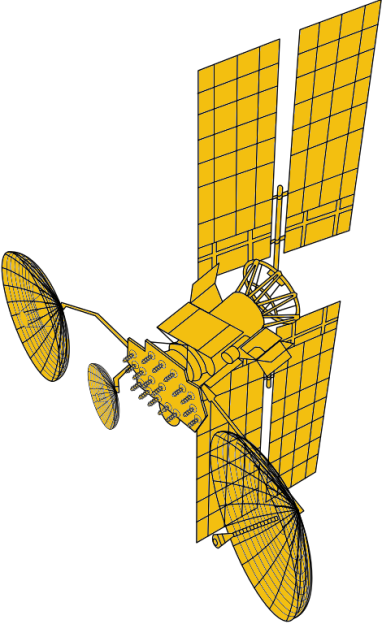French Defense Minister Florence Parly took a page out of Little Red Riding Hood when she recently called out a Russian satellite for having “big ears”. While she stopped short of giving any concrete details, it was a rare and not terribly veiled accusation that Russia is using their Luch-Olymp spacecraft to perform orbital espionage.

At a speech in Toulouse, Parly was quoted as saying: “It got close. A bit too close. So close that one really could believe that it was trying to capture our communications.” and “this little Stars Wars didn’t happen a long time ago in a galaxy far away. It happened a year ago, 36,000 kilometers above our heads.”
The target of this potential act of space piracy is the Athena-Fidus satellite, a joint venture between France and Italy to provide secure communication for the military and emergency services of both countries. Launched in 2014, it provides 3 Gbit/s throughput via the Ka-band for mobile receivers on the ground and in drones.
This isn’t the first time Russia’s Luch class of vehicles has been the subject of scrutiny. In 2015 it was reported that one such craft maneuvered to within 10 kilometers of the Intelsat 7 and Intelsat 901 geostationary communications satellites, prompting classified meetings at the United States Defense Department. As geostationary satellites orbit the Earth at 3.07 km/s, a 10 km approach is exceptionally dangerous. Even a slight miscalculation could cause an impact within seconds.
Could Stealth Satellites Be In Our Future?
Much to the chagrin of shadowy spy agencies everywhere, this sort of orbital cat and mouse is easily detectable from the ground. When spy planes became easy to detect using radar, the next step was to evade that detection. Are we on a path to satellites that are transparent to radar?
Gregory Charvat, author of Small and Short-Range Radar Systems and occasional contributor here at Hackaday, tells us that building a stealth satellite is no easy task. “Just like how we had to re-invent the aircraft to make the first stealth aircraft, to make a stealth satellite one would have to fundamentally re-invent the satellite as we know it today.”
Likening it to the immense cost and effort it took to develop stealth aircraft like the Lockheed F-117 Nighthawk, Gregory says developing a satellite which could hide from radar would likely be more trouble than it’s worth for most applications. Space is already hard enough. “Maintaining that special shape that reflects radar away from your aircraft and including all of these essential peripherals is a big challenge” Gregory says, which results in “compromise and high maintenance costs.”
Beyond attempting to eavesdrop on communications, military insiders say that these close passes by Luch satellites could also be “dry-runs” for anti-satellite operations; either by using a directed energy weapon to disable the target spacecraft, or simply running into it. With events like these, and the commitment by the United States to establish a Space Force in the coming years, efforts to militarize space seem to be on the rise.
[via DefenseNews]


















